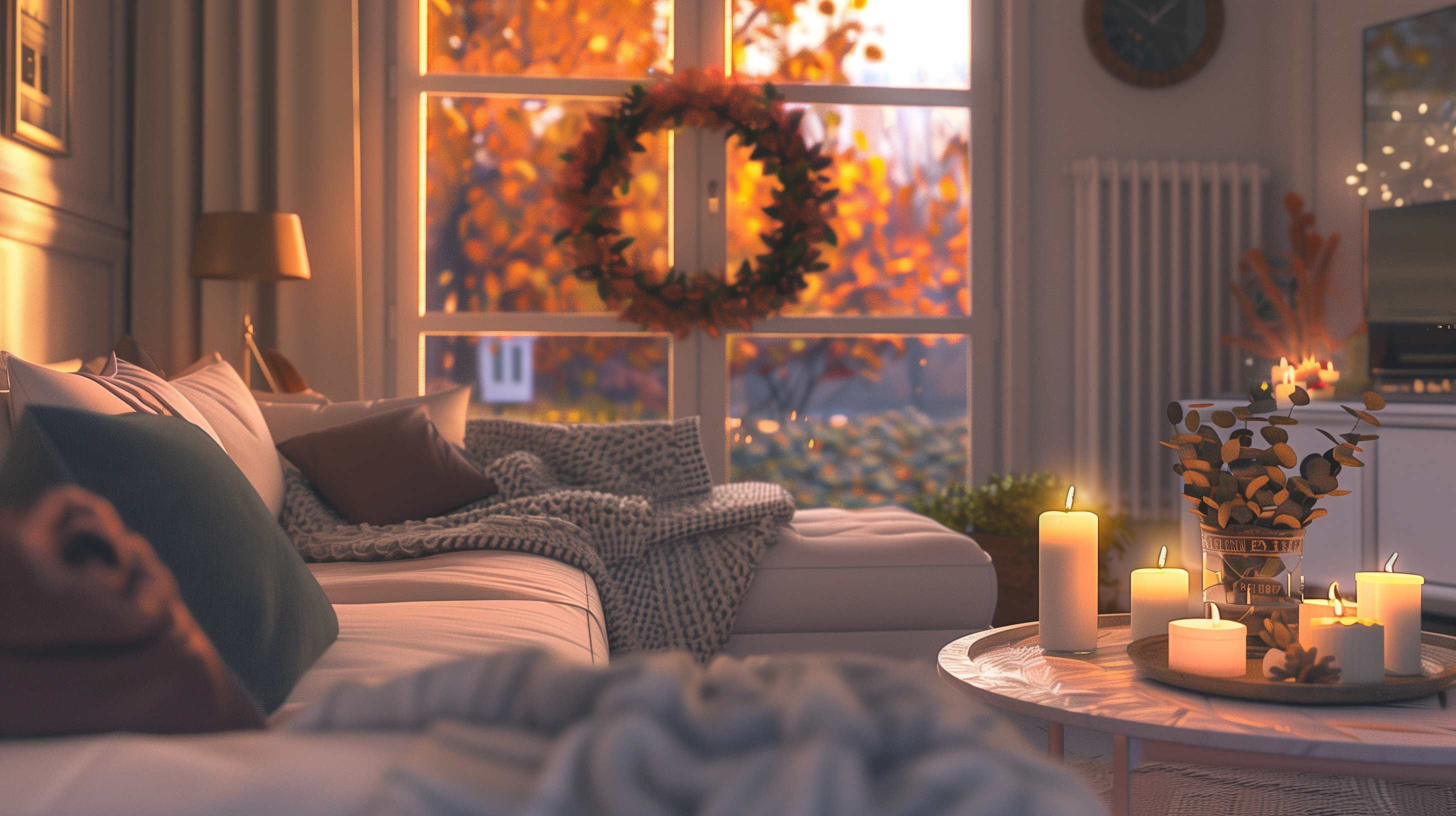There's something almost spiritual about the way light changes in autumn. Summer's blinding brightness softens into golden hour mornings, and shadows fall earlier each evening. For most people but for those who live with chronic illness, the transition isn't all about cozy sweaters and pumpkin spice everything. But for those who live with chronic illness, fall's changing patterns of light can offer something even better: a natural reset button on your sleep schedule.
I know how infuriating sleep is when you live with chronic illness. You feel tired and wired, pain awakens you, or medication schedules sabotage any hope for a normal bedtime. Certain nights you do sleep but wake up like you never slept. Is that how it is for you?
Here's what caught my attention recently: how autumn light naturally varies might just be in our favor for a change. Instead of fighting against our bodies, we might be able to use variation in the seasons to improve our sleep. Let me explain what I've learned.
Your Internal Clock Is More Powerful Than You Think
We all have an internal clock, our circadian rhythm—a 24-hour biological clock that determines when to wake up and when to sleep. It is not just about sleeping; it controls hormone secretion, digestion, body temperature, and even the immune system.
For us with chronic illness like fibromyalgia, chronic fatigue syndrome, POTS, or autoimmune disease, that internal clock is disrupted. Pain medication disrupts it. Chronic inflammation does the very same thing. Stress causes it to go round and round. The reward? Sleep that never ever feels just right despite how tired you are.
But the good news is that light is one of the strongest tools available for resetting this clock. And fall provides just the right amount of light exposure to put it back on track.
What Makes Fall Light Different
Summer sunlight is ruthless—the days that are so long and sunny, lasting until 9 PM, keeping your brain from knowing that sleep time would be arriving. Winter gets its trick done in not having enough light time. But autumn? Autumn takes a cozy middle ground.
The sunsets come earlier and are more common in a natural way, so your body gets used to it. As it gets darker earlier, your brain insists on making you produce melatonin—that sleep-inducing hormone—earlier in a more rational hour. Instead of resisting sleeping when your body is still convinced it's day time, you're with your natural clock.
Softer golden morning light is another revolutionizer as well. Autumn mornings give us that beautiful golden light that's light enough to inform your brain it's "time to wake up" without being so harsh that it causes migraines or light sensitivity issues so many of us have to deal with.
Lower temperatures naturally make us want to bundle up and get into bed earlier. Your body temperature actually has to decrease slightly in order for good sleep to take place, and falling temperatures assist it.
Why This Matters When You're Already Tired
When you're already battling chronic disease, even small improvement in the quality of your sleep can accumulate into better overall days. Fall light is some unique benefits that are worth mentioning:
- Your body starts producing melatonin earlier and more reliably when it gets dark at a decent time. That's less turning and tossing in bed getting angry that you can't sleep when you're bone-weary.
- Shorter days naturally shape themselves into earlier bedtimes without peer pressure to stay out till the wee hours just because it's not dark yet. You're not fighting your body and society.
- Fall evening rhythm—the slow lowering of light, the way that air gets thick—lets your body know to start to wind down. Your nervous system is being signaled several times that it's time to transition into relaxation mode.
There really is science behind it. In 2020, a study published in the Journal of Clinical Medicine found that patients with chronic illnesses who were treated with morning light exposure saw their sleep quality significantly improve and noticed less daytime fatigue. The scientists described how even small exposures to natural light had an measurable impact.
Making Fall Light Work for You
The best part about utilizing changing season light is that it doesn't have to be pricey or involve hard-to-synchronize schedules. You're just coordinating with what happens naturally around you.
- Spend some time outside in the morning, even for a minute. I don't suggest sitting in the sun for hours; 10-15 minutes is fine. If you're not having an energy day, even sitting next to an open window with a morning coffee will work. The idea is to take your eyes outside to the natural light during the morning to help anchor your circadian rhythm.
- Welcome the old darkness. Instead of resisting with harsh interior lighting at sunset, let your house grow dark as night. Switch to softer, warmer bulbs after dinner. This gives your brain permission to allow your body to start winding down.
- Establish evening routines that honor your body's signals. If you feel exhausted at 8 PM, don't push through it just because it is "too early." Get snuggled up in something comfortable, have a cup of tea, and let your body rest when it needs to.
- Listen to your body rhythms. You might catch yourself dozing off sooner in the evening as the seasons shift. That is not slothfulness—your body is responding to natural light cues. Honor that instead of all-night artificial alertness.
The Reality Check
Will copying fall light patterns heal your chronic disease? Naturally not. Will it wonder away pain or take away all your symptoms? No way. But what it might do: allow you to sleep a bit better, which can lead to coping with pain a bit better, which can lead to having a bit more energy to get things done that are important to you.
In the life of chronic illness, those small chunks of "a little bit better" can compound big time. Better sleep equals more fuel for your body to draw upon healing and symptom control. It equals less brain fog and emotional strength. It is a little bit more manageable day.
Working with Nature Instead of Against
Perhaps the hardest thing about chronic illness is the sense that your own body is constantly at war with you. Every step is a struggle—with symptoms, with timing, with demands. Autumn light, though, offers a different option: the chance to work with natural currents rather than against them.
The gradual change to shorter days is gradual enough that your body is able to acclimate without shock. You're not suddenly thrust into winter darkness or shocked into perpetual light by summer. It's a gradual change that respects your body's need for predictability.
It doesn't mean you need to turn into a servant of the golden hour or an exposure extremist. It just means paying attention to what your body is doing with you as the seasons go by and taking permission to make necessary adjustments.
Small Changes, Real Impact
The best treatment for chronic illness isn't always a pill or therapy—sometimes it's simply plain old environmental control. Light exposure is free, natural, and available to almost everyone. You don't require a doctor's prescription or specialist appointment to walk outside in the morning or turn the lights down at sunset.
The key is to be consistent, not perfect. You don't need to time everything exactly or pay attention to how much "proper" exposure you are getting. Just small, regular adjustments that mesh with your body's natural rhythms can make a large impact over time.
When the autumn arrives and the days shorten, use that as an opportunity to try things out. See how your sleep patterns shift with light shifting. Observe when you want to sleep and when you feel most awake. Tune in to your patterns instead of fighting them.
Your chronic sickness can make most things in your life difficult, but using fall light to achieve better sleep habits does not have to be one of them. Sometimes the best medicine is literally as simple as getting outside in the mornings and letting yourself sleep when it gets dark.
Taking care of chronic illness is taking care of a million tiny things, ranging from pill regimens to energy conservation.



Back-to-School & the ADA: Know Your Child's Rights (and Reduce Stress)
10 Ways to Be One Step Ahead of Germs This Cold and Flu Season